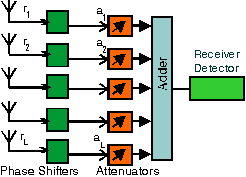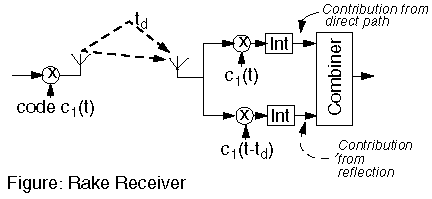
 |
JPL's Wireless Communication Reference WebsiteChapter: Analog and Digital Transmission
|
 | Figure: L-branch antenna diversity receiver (L = 5). With MRC, the attenuation/amplification factor is proportional to the signal amplitude ai = ri for each channel i. |
 Derivation
Derivation| The idea to boost the strong signal components and attenuate the weak (relatively noisy) components, as performed in MRC diversity, is exactly the same as the type of filtering and signal weighting used in the matched filter receiver. A particularly interesting application of this concept is the Rake receiver for detecting direct-sequence CDMA signals over a dispersive channel. | 
|